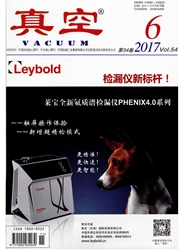

 中文摘要:
中文摘要:
在磁约束聚变装置中,高温等离子体放电中粒子的实时排出不仅可以减少燃料粒子在第一壁的滞留,还可以排出一定的杂质,有利于下一次等离子体放电的实现。对于未来聚变装置,如ITER,还有利于减少氚滞留导致的装置安全问题。本文根据EAST全超导托卡马克装置不同等离子体放电参数和不同第一壁条件下的放电实验,主要研究了等离子体破裂和锂化壁处理对粒子排出的影响。初步研究表明,等离子体破裂导致更多的粒子排出,并且排出气体中杂质含量降低;而锂化壁处理可以减少粒子排出,但杂质含量增高。这些研究可以为未来高参数等离子体运行找到一种实时降低壁杂质及减少壁滞留的方法提供参考,也对研究等离子体参数对等离子体排灰气成分分析有着参考价值。
 英文摘要:
英文摘要:
In the magnetic confinement fusion devices, exhaustduring high temperature plasma discharge can reduce the retention of fuel particlesin the first wall, evacuate some impurities, benefit the next plasma discharge, and reduces tritium retention for the safety of ITER devices. The effects ofdisruption discharge and lithiationtreatment on the exhaustedgaseswere studied based on the experiments of EAST in 2014. The results show that the disruptions increase the particlesrelease from walls, with fewerimpuritiesin exhaust gases. However lithiationreduces particles release with moreimpurities. These studies can provide a reference to reduce the wall impurities and retention for the high parameter plasma operationas well asthe effectof parameterson composition analysisin the future.
 同期刊论文项目
同期刊论文项目
 同项目期刊论文
同项目期刊论文
 期刊信息
期刊信息
